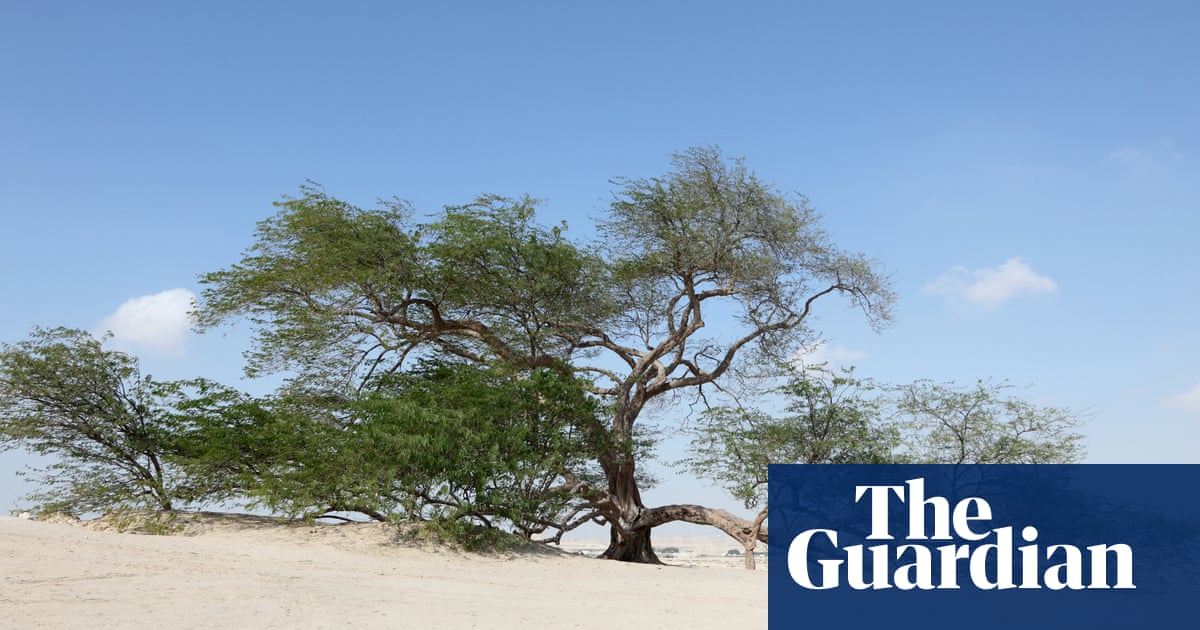
The act of vandalism in which Northumberland’s famous Sycamore Gap tree was felled last month has produced an outpouring of love and grief. Locals and tourists have shared their memories of the 300-year-old former winner of England’s tree of the year competition, which stood in a gap in Hadrian’s Wall: two nearby residents even crocheted their own tribute to it.
In honour, then, of the Sycamore Gap tree, we branch out to take a look at some of the world’s best-loved and most visited dendrological specimens.
General Sherman
Probably the most famous tree on our list, General Sherman is a giant sequoia (Sequoiadendron giganteum), which lives in its appropriately named home, the Giant Forest in Sequoia national park, California. Sherman is just under 84 metres (275ft) tall and is estimated to be between 2,200 and 2,700 years old. While not the largest tree in recorded history, or the tallest living tree, it is the largest living tree by volume, which is still something to be proud of.
Sherman is named after the civil war general William Tecumseh Sherman. In the 19th century, however, the land was occupied by a socialist commune that objected to Sherman’s oppressive attitude towards Native American tribes, and the tree was renamed Karl Marx. It didn’t last.
Hyperion
Vying for General Sherman’s title of California’s most beloved massive tree is Hyperion, a coast redwood (Sequoia sempervirens), the world’s tallest living tree at about 115 metres. Its exact location is kept secret, but it’s somewhere in the dense Redwood national park. Internet sleuths have managed to track down this rangy king, and today anybody who gets too close can receive a $5,000 fine and be jailed for up to six months.
Cotton Tree
In a story as tragic as the demise of the Sycamore Gap tree, the iconic centuries-old Cotton Tree, which stood as a symbol of liberty and resilience in Sierra Leone’s capital, Freetown, was destroyed earlier this year in a storm. Some believe the 70-metre tall and 15-metre wide kapok (Ceiba pentandra) tree was planted by freed slaves in the wake of the American revolutionary war.
In 1961, after Sierra Leone gained independence, Elizabeth II visited the tree, which was described as a “colossus, in the middle of the city keeping watch”. When the Cotton Tree was felled, the nation’s president mourned its loss, saying that there had been “no stronger symbol of our national story than the Cotton Tree, a physical embodiment of where we come from as a country”.
The Great Wisteria Tree
Wisterias are technically vines, but in Ashikaga Flower park, north of Tokyo, is a 150-year-old specimen, one of Japan’s most loved trees that bursts with vibrant lilac flowers. The park is a hugely popular destination with an 80-metre long “wisteria walk” and around 350 of the trees in total. Japan’s oldest tree, the mighty Jōmon Sugi yakusgugi, which some estimates put at 7,000 years old, is far away on the island of Yakushima, a Unesco world heritage site. At 25 metres tall and with a circumference of 16 metres, it is quite the specimen – but it falls short of the riot of colour that is the Ashikaga tree.
The Lone Cypress
The Lone Cypress’s attraction is similar to that of the erstwhile Sycamore Gap tree (although there are, in fact, other trees nearby). It stands on a rocky outcrop with great views of the Pacific, along Monterey’s famous 17-Mile Drive.
Our third Californian entry after General Sherman and Hyperion, the Lone Cypress has weathered the ocean elements for about 250 years, resulting in continual changes in its appearance. It survived an arson attack in 1984, and a severe storm in 2019. Apparently one of “the most photographed trees in North America”, it has a strong background-to-selfies Instagram presence.
The Tree of Life
The Tree of Life is a 9.75-metre-high ghaf (Prosopis cineraria) tree that, miraculously, makes its home in the otherwise barren Arabian Desert in Bahrain. Locals are puzzled as to how the tree has survived for 400 years in an area with barely any rainfall and no fresh water – although its roots are said to be 50 metres deep.
Some 65,000 admirers visit the tree each year, and some believe it is growing at the site of the Garden of Eden. In the 1991 film LA Story, Steve Martin’s character refers to the Tree of Life as being in one of the most mystical places on Earth. It’s useful, too: its resin is used to make candles and gum and its beans are processed into meal, jam and wine. Seriously, though, how is the Tree of Life alive?
The Avenue of the Baobabs
It’s not a single tree, but the Avenue of the Baobabs is one of Madagascar’s most popular tourist attractions. The grove of about 25 Grandidier’s baobabs (Adansonia grandidieri) stands along a 260-metre stretch of road and are up to 2,800 years old. In 2015, the Avenue of the Baobabs was given official national monument status.
The Major Oak
The Major Oak (an English oak, Quercus robur) was voted England’s tree of the year in 2014 in a Woodland Trust competition. Robin Hood was thought to have taken shelter in its hollow trunk to hide from his archenemy, the Sheriff of Nottingham. Estimated to have been standing for almost 1,000 years, the Major Oak sits at the heart of Sherwood Forest in Nottinghamshire. It is named after Major Hayman Rooke, who included the tree in a book about the oaks of Sherwood published in 1790.
The Major Oak is chunky, weighing an estimated 23 tonnes and with a canopy 28 metres wide; it also hosts 150,000 acorns. Fans include the television presenter Matt Baker, who proposed to his wife underneath it, and it was also visited by the 2012 Olympic flame. Which was presumably risky, but it remains an unscorched English icon.












